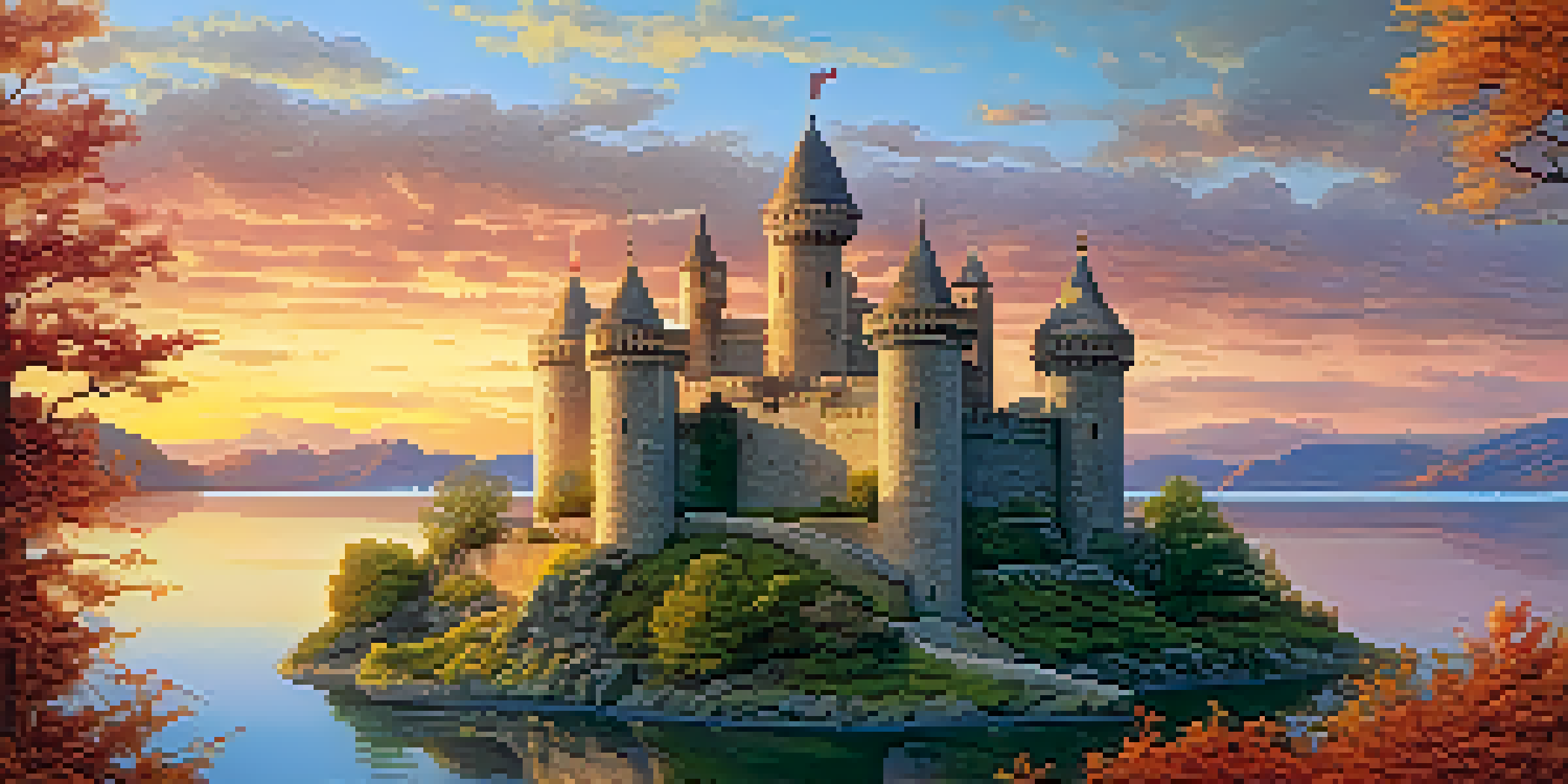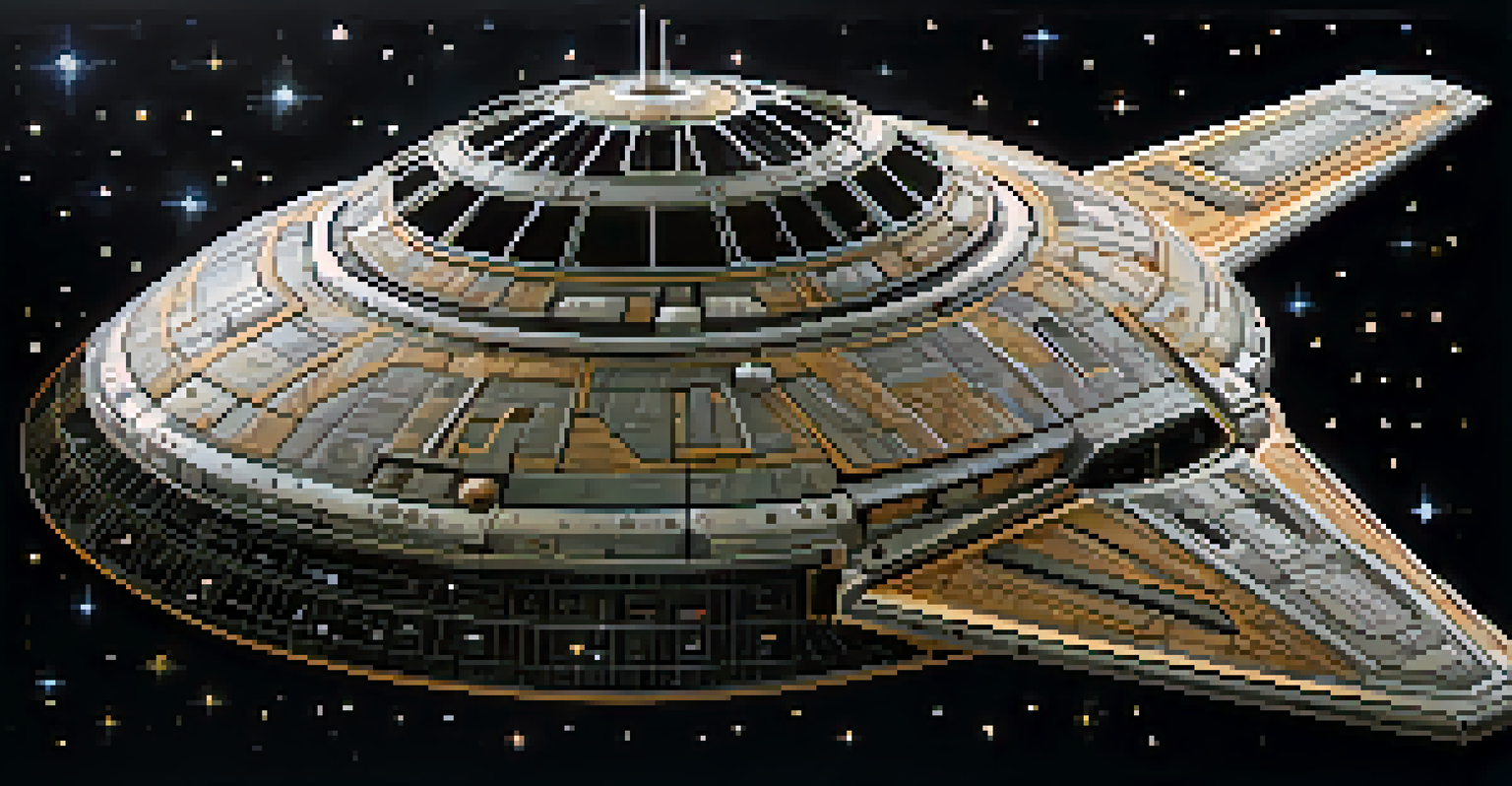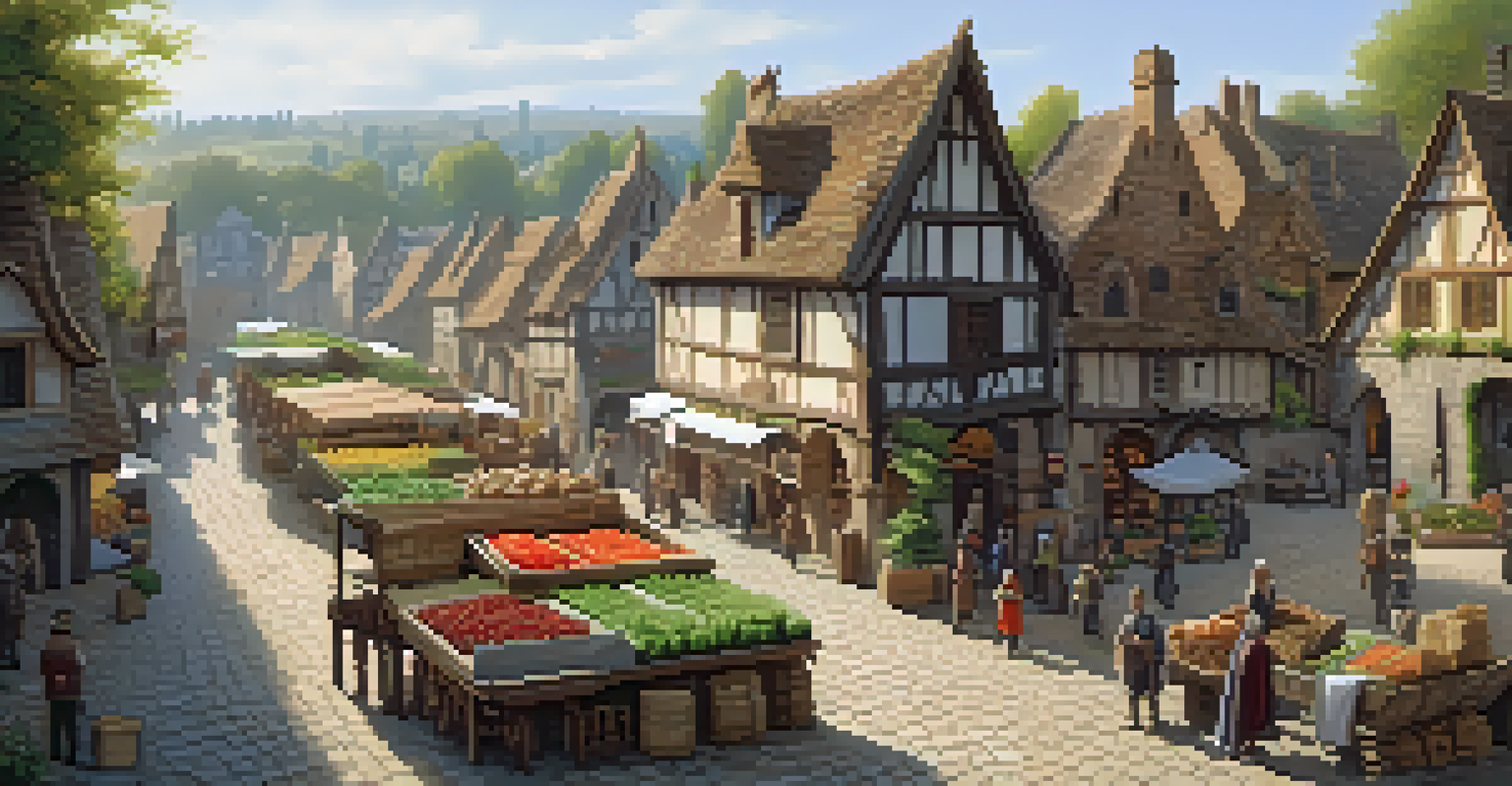The Role of Miniatures in Classic Hollywood Special Effects

Introduction to Miniatures in Film History
Miniatures have played a pivotal role in the evolution of special effects in cinema. From the early days of film, filmmakers sought innovative ways to create spectacular visuals, and miniatures offered a cost-effective solution. These small-scale models allowed for the creation of breathtaking scenes that would have been impossible to film in real life.
The art of filmmaking is the art of storytelling, and miniatures have played an essential role in creating those stories on screen.
In classic Hollywood, miniatures were often used to depict grandiose structures or massive vehicles, allowing audiences to believe they were witnessing something extraordinary. Movies like 'King Kong' (1933) showcased the power of miniatures, blending them seamlessly with live-action footage to create memorable moments. This technique helped set the stage for future advancements in visual storytelling.
As the film industry evolved, miniatures became a staple in the toolkit of special effects artists. Their versatility and ability to produce stunning visuals while remaining budget-friendly ensured they would remain relevant, even as technology advanced. Understanding their role in classic Hollywood is essential for appreciating the artistry behind today's blockbuster films.
The Craftsmanship Behind Miniatures
Creating miniatures is no small feat; it requires a blend of artistry and engineering. Skilled craftsmen meticulously design and build these models to replicate real-world objects, ensuring every detail is perfect. From the texture of a building's facade to the intricate workings of a spaceship, the craftsmanship involved is astounding.

One of the most famous examples of miniature craftsmanship is the iconic model of the USS Enterprise from 'Star Trek' (1966). The model was designed with precision, allowing it to appear realistic on screen despite its small size. Such attention to detail is what makes miniatures a compelling choice for filmmakers looking to create immersive worlds.
Miniatures Shape Film History
Miniatures have been crucial in the evolution of special effects, enabling filmmakers to create stunning visuals and immersive worlds.
Additionally, the materials used in constructing miniatures have evolved over time, allowing for greater flexibility and realism. From lightweight plastics to more durable materials, each choice affects how miniatures perform on set. This dedication to quality craftsmanship has helped miniatures maintain their place in the hearts of filmmakers and audiences alike.
Miniatures vs. Other Special Effects Techniques
While miniatures have been a beloved technique in Hollywood, they often coexist with other special effects methods. Techniques like matte paintings, puppetry, and animatronics contribute to the visual storytelling process, but miniatures stand out for their unique ability to create dynamic environments. By juxtaposing miniatures with live-action footage, filmmakers can craft captivating scenes that feel expansive and believable.
Miniatures, like dreams, can create worlds that feel real and resonate with audiences, no matter how small.
For instance, in 'The Wizard of Oz' (1939), miniatures were used to create the impressive Emerald City. The combination of set design and miniatures allowed the filmmakers to establish a fantastical world that captivated audiences. This synergy between miniatures and other techniques highlights the collaborative nature of filmmaking.
However, as technology advanced, filmmakers began to explore digital effects, sometimes overshadowing traditional methods like miniatures. Despite this, the tactile quality and charm of miniatures continue to resonate, reminding us of the artistry and dedication that goes into creating visual magic on screen.
Iconic Films That Utilized Miniatures
Several iconic films have effectively showcased the power of miniatures, leaving an indelible mark on cinematic history. 'Star Wars' (1977) is perhaps one of the most famous examples, featuring meticulously crafted models for spaceships and planets. These miniatures brought George Lucas' vision to life, making the galaxy far, far away feel tangible.
Similarly, 'The Bridge on the River Kwai' (1957) used miniatures to depict the construction of the iconic bridge. The filmmakers created a breathtaking visual narrative that combined real-life action with expertly crafted models, illustrating the challenges faced by the characters. This blend of reality and artistry is what makes these films unforgettable.
Craftsmanship Drives Miniature Art
The meticulous craftsmanship behind miniatures ensures they remain a compelling choice for filmmakers, blending artistry with engineering.
Other films, like 'Jurassic Park' (1993), utilized a combination of miniatures and animatronics to create lifelike dinosaurs. The use of physical models allowed for a sense of weight and presence that digital effects sometimes struggle to achieve. These examples highlight how miniatures can elevate a film's storytelling and visual impact.
The Evolution of Miniature Techniques
Over the decades, miniature techniques have evolved significantly, adapting to advancements in technology and changing audience expectations. Early miniatures were often static, but filmmakers began experimenting with movement and scale to create more dynamic scenes. Techniques such as forced perspective and camera tricks helped enhance the illusion of size and space.
As CGI began to rise in popularity, some filmmakers opted to combine digital effects with traditional miniatures. This hybrid approach allowed for greater creative freedom while still preserving the tangible quality of physical models. Movies like 'The Lord of the Rings' trilogy showcased how miniatures could complement digital effects, creating epic battles and stunning landscapes.
Today, miniatures are still used in various forms, proving that practical effects have not been completely overshadowed by digital technology. While the industry continues to innovate, the charm and authenticity of miniatures remind us of the artistry that has shaped cinema for generations.
The Future of Miniatures in Filmmaking
As technology continues to advance, the future of miniatures in filmmaking remains bright. Filmmakers are discovering new ways to incorporate miniatures into their storytelling, often blending them with cutting-edge digital techniques. This fusion creates a visual experience that captivates audiences while honoring the craftsmanship of traditional methods.
Moreover, the growing appreciation for practical effects has sparked a resurgence of interest in miniatures. Many filmmakers are inspired by the classics and are eager to experiment with this art form, recognizing its ability to evoke emotion and authenticity. This shift reflects a broader trend in the industry, where audiences crave a return to tangible artistry.
Future of Miniatures is Promising
As filmmakers increasingly blend traditional miniatures with digital techniques, the appreciation for practical effects is experiencing a resurgence.
As we look to the future, it's clear that miniatures will continue to play a vital role in filmmaking. They offer a unique blend of artistry, craftsmanship, and storytelling potential that resonates with both filmmakers and audiences alike. The legacy of miniatures in classic Hollywood will undoubtedly influence generations of filmmakers to come.
Conclusion: Celebrating the Art of Miniatures
In conclusion, miniatures have played an integral role in shaping the landscape of classic Hollywood special effects. Their unique ability to create stunning visuals while allowing for creative storytelling has left a lasting impact on the film industry. By blending artistry and craftsmanship, miniatures have created some of cinema's most memorable moments.
As filmmakers continue to explore new techniques and technologies, the legacy of miniatures remains influential. The appreciation for practical effects is growing, and audiences are drawn to the tactile quality that miniatures bring to the screen. This celebration of artistry reinforces the importance of honoring traditional methods while embracing innovation.

Ultimately, the role of miniatures in classic Hollywood is a testament to the creativity and dedication of filmmakers. They remind us that even in an age of digital dominance, there is a special magic in the tangible, handcrafted world of miniatures that continues to inspire and captivate.